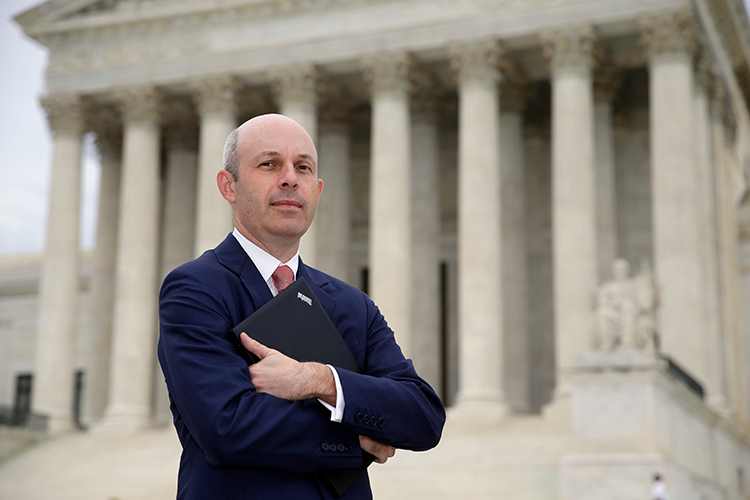Best for the Business

Illustration by iStockPhoto.com
When Pat Lyden read about her local business newspaper soliciting nominees for the Bay Area’s best places to work, Fenwick & West’s chief human resources officer saw an opportunity.
Bizjournals, the new media division of American City Business Journals—which includes the San Francisco Business Times, East Bay Business Times and Silicon Valley/San Jose Business Journal—was asking employees to take an online survey, the results of which would be rated in areas such as retention, team atmosphere, trust and management.
When the results were in, Fenwick & West ranked eighth last year (and the firm expects good results for 2008). About 450 companies were nominated and more than 160,000 employees in the area took the survey, says Lyden, who works out of the firm’s Mountain View, Calif., office.
A best workplace award “reassures people that we have a strong reputation,” Lyden says. “That has to make [clients] feel good about their choice—that someone has recognized their law firm as a good place to work, where employees are valued and treated well.”
The ranking also tells employees and clients, both prospective and current, that the firm does not rest on its laurels, Lyden says. Fenwick & West was also one of the few law firms in Fortune magazine’s list of 100 best companies to work for in America, debuting in 2001 at No. 7, and making the list for four years until the magazine increased the minimum number of employees from 500 to 1,000, she says.
RECRUITMENT TOOL
Though Lyden does not have exact figures on how being a top workplace affects her firm’s recruiting and retention, she says potential associates and laterals take notice, especially because the list is local.
“The Bay Area has a large number of firms, but it’s a small community; we all know each other. Some employees came from other firms, so they have a real ability to compare one with another,” she says, adding that potential recruits often mention the list during the interview. The list “becomes even more valuable when someone comes to the firm and says, ‘I worked at three or four firms in the area and this is home,’ because they have a point of reference.”
Current employees take ownership of the list simply by participating in the survey, she adds. “Nothing else determines who the winners are—just the votes of the employees.”
Lyden encouraged firm participation in 2007 and again this year. “I liked that [the survey] was anonymous so employees would feel comfortable participating, and I felt it would be a good tool to get feedback on how employees were feeling.”
Lyden does not know how many of the 607 employees in the firm’s three offices participated, but to be considered, at least 30 percent of employees had to complete the survey. She thinks at least twice that percentage of Fenwick & West employees did. The media company shared survey results with each employer, and Lyden says the high participation rate “tells me that people were really interested in giving feedback.”
In today’s competitive market, being honored as a top workplace can be crucial for businesses that want to court a new generation of workers, according to marketing specialists and some firms. Many such lists also measure numbers of minority and female employees, as well as benefits that attract people with families—areas increasingly important to both prospective clients and employees.
“It’s incredibly important to keep the good lawyers you have now and attract new recruits,” says attorney Larry Bodine, a Glen Ellyn, Ill.-based strategic marketing consultant for law firms and former editor and publisher of the ABA Journal. “And nothing attracts new people more than being able to say, ‘Fortune says we’re one of 100 best places to work in the country.’ ”
Current consideration of workplace diversity initiatives has made the lists more valuable, Bodine adds. Law firms that want to do business with top corporations will find that many of them require firms to show a commitment to hiring and retaining women and minorities.
“The law firm is probably the most family-unfriendly place you can go,” he says. “If you want to go on the mommy or daddy track, most firms will say, ‘That’s fine; you just added another three to five years to be considered for partnership.’ It’s difficult to recruit women because they feel that somewhere down the line, they are going to have to choose between having a family and having a job, which is not a fair choice.
“So if you can state that you scored high in one of these rankings, it gives legitimacy to your claim that [your firm] is a good place for women to work. And having women will be attractive to clients and recruits,” Bodine says.
But what is attractive about filling out online surveys, such as the one by Bizjournals, or compiling a year’s worth of data and materials, which Fortune requires along with its extensive employee survey? For Cathy Benton, chief human resources officer for Alston & Bird in Atlanta, it’s the strategic advantage. The firm has been on the Fortune list for nine years.
“Every year we hear from the Great Place to Work Institute [which partners with Fortune] that it’s a list more and more organizations really want to be on, to be recognized as an employer of choice,” she says. “People want to work at a place where people are recognized” and work-life balance is respected, Benton adds, “and the list is a measure they are looking at.”
LAWYER-CLIENT CAMARADERIE
Alston & Bird’s place on the Fortune list has especially resonated with clients, Benton says. In the last nine years, several clients have wanted to be on the list and asked their law firm’s advice. “For the first time, lawyers were getting calls [from clients asking], ‘Can I talk to your HR director?’ That’s not typically something that happens between clients and their lawyers.”
Though Benton cannot say the recognition has directly resulted in new clients, relationships with clients have evolved. “We’ve been able to give them some advice on things we’ve done that have helped us create this kind of work environment,” she says. For example, the firm has created a client service initiative that it shares with clients for use in their own companies.
At Arnold & Porter, ranking on Fortune’s list for the past six years and Working Mother magazine’s for at least eight appeals to both clients and prospective employees, says Elizabeth Respess, chief human resources director and acting executive director in Washington, D.C.
Clients see the Fortune list “as a Good Housekeeping stamp of approval,” she says. But Working Mother relies on HR-provided information such as demographics, diversity and family-friendly policies rather than employee surveys. Clients pay attention to these factors in their own businesses, Respess says.
“More and more [clients] want to make sure the law firms they use are diverse and inclusive,” she adds. “If we weren’t able to satisfy them on that score, perhaps they wouldn’t want to work with us.”
Employee retention is high because benefits evolve to meet their needs, Respess says. Though her firm does not necessarily attribute being on top workplace lists to high retention, she knows staying competitive means listening to employees.
“You can’t assume you create one set of policies, have them in place and they will serve you. Employees are always looking for different things to reassure them they are working in a place that is right for them,” she says.
For example, this year the firm expanded its paid benefits for maternity and adoption leave, and it added paid primary caregiver leave to care for a seriously ill family member.
“We don’t create these policies to get these awards. We’re thrilled to get them, but we’re trying to make this a great place to work,” Respess says.
Fenwick & West has used the Bizjournals survey to become better on issues: Some of its newest benefits, like an on-site gym and professional development training, are a direct result of feedback from last year’s survey, Lyden says. “We can only fix things we know are broken,” she says.
Alston & Bird recently added maternity parking, longer paternity leave, new parent groups and a closet where pregnant employees can share clothes. These attract young workers searching for work-life balance, Benton says. “We don’t just add a new benefit because we think it’s going to keep us on a list,” she says. “We add it because there’s a business need for it and it will support what we’re trying to do.”
Being on a best workplace list, whether local or national, attracts other best workplaces, which is good for business all around, she adds.
“There are a number of organizations that want to work with … other organizations that share these kinds of values,” Benton says. “We’ve heard from clients that they like working with us because they can tell when they come in the door, it’s a very warm environment. That’s what they’re used to, and that’s what they like.”



